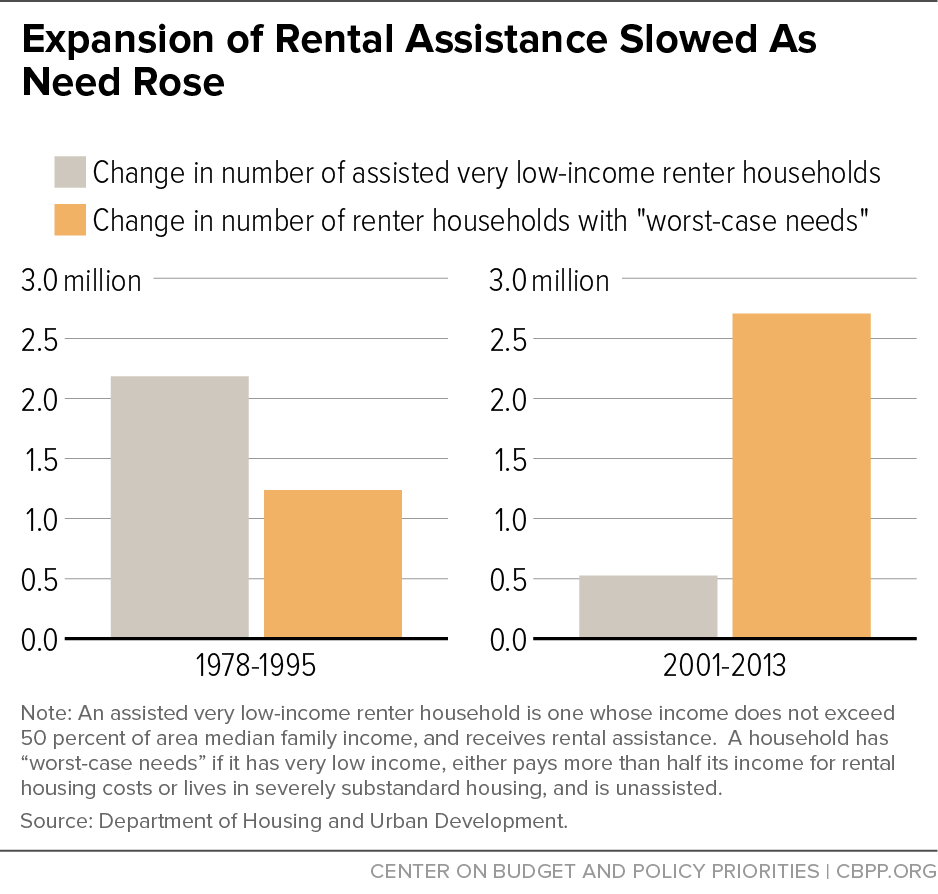BEYOND THE NUMBERS
Gap Between Renters’ Wages and Rents Has Grown as Policymakers Have Largely Ignored Need
The number of renters struggling to afford housing has far outpaced the expansion of rental assistance in recent decades, as our new chart book illustrates. Renter incomes fell during the economic recessions that began in 2001 and 2007; as of 2014, they remained well below the 2001 level. At the same time, rental costs have risen as the supply of rental units has failed to keep pace with a record-setting surge in the number of renter households.
The growing gap between rents and incomes has particularly squeezed low-income families. From 2001 to 2013, the number of unassisted renter households with very low incomes (no greater than 50 percent of the area median income) that are paying more than half their income for rental costs or live in severely substandard housing — i.e., those with “worst-case needs” — rose 54 percent, from 5 million households in 2001 to 7.7 million in 2013. Families with children have experienced the largest growth in worst-case needs.
Meanwhile, the number of very low-income households receiving rental assistance rose by only 525,000. This weak response contrasts sharply with policymakers’ earlier successful efforts to address growing needs. Policymakers expanded rental assistance to more than half of the 3.9 million additional very low-income renter households that were formed between 1978 and 1995. As a result, the number of renters with “worst-case needs” rose by about 1.4 million households from 1978 to 1995 — only half the size of the recent increase (see chart).
Policymakers’ neglect of families’ worsening struggles to keep a roof over their heads has had consequences, including an alarming number of schoolchildren whose efforts to succeed in school are undermined by their families’ homelessness.
Looking ahead, budget caps may restrict funding for federal rental assistance even further. I’ll be back tomorrow with more on those projections.

